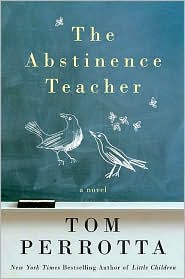 My husband, a writer in his own right, loved The Abstinence Teacher so much that he started an email exchange with Tom Perotta about it. That’s incredibly rare esteem from him. So, I read it immediately.
My husband, a writer in his own right, loved The Abstinence Teacher so much that he started an email exchange with Tom Perotta about it. That’s incredibly rare esteem from him. So, I read it immediately.
I will agree with Ned Andrew that the prose is flawless and the dialogue is incredibly crisp. Most of the characters are sensitively drawn and multi-dimensional–especially the males. Perrotta does a wonderful and sensitive job of exploring difficult relationship and community issues without making anyone out to be the villain.
I appreciated that there wasn’t a neat and tidy wrap up–one of my pet peeves–and that the pace was maintained throughout the book. The movement between the two main characters was seamless.
There was one aspect that left me a little flat. Of the two main characters, Perrotta may have short-changed Ruth a bit. While we get all sorts of depth when we watch Tom make his choices and understand why he does some of the things he does–even when we wouldn’t choose those paths–Ruth is less a protagonist than she is a reactionary. I kept wanting her to do something instead of just bouncing off of everyone else’s choices.
I did really enjoy reading the book. Perrotta is laugh-out-loud funny at times–admittedly more often for Ned than for me–and can break your heart with dead-on dialogue. I can’t give it all 10 (5? I need to get a rating system worked out.) gold stars simply because I wanted a little more development of Ruth’s character–but I am really being picky here.
If you enjoy deep characters, the exploration of difficult subjects, and incredible dialogue, Perrotta has written a book that’s worth the read.


your thoughts